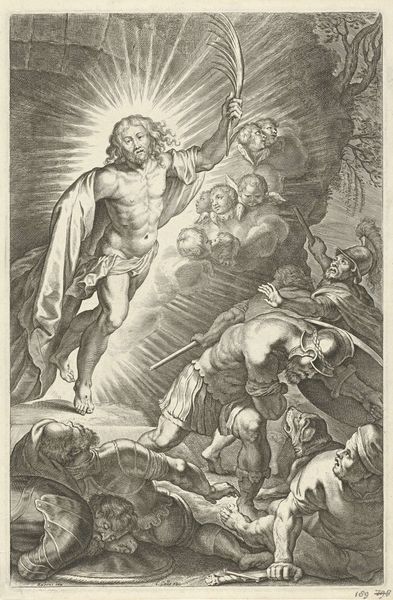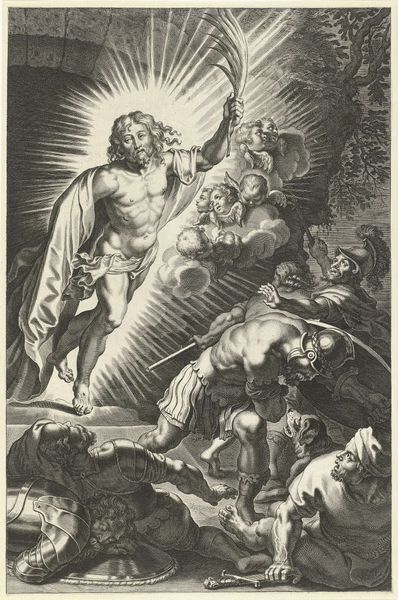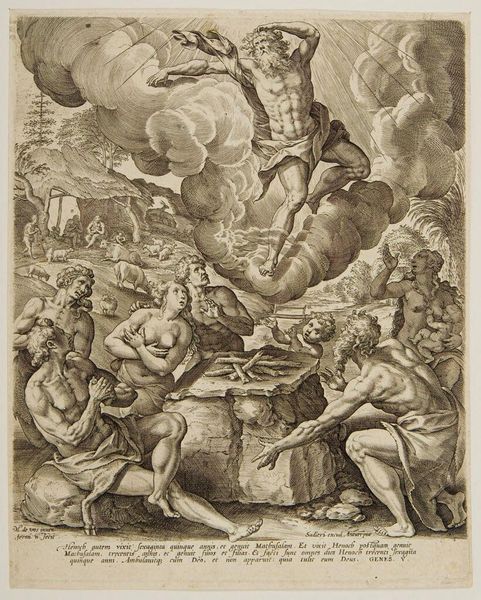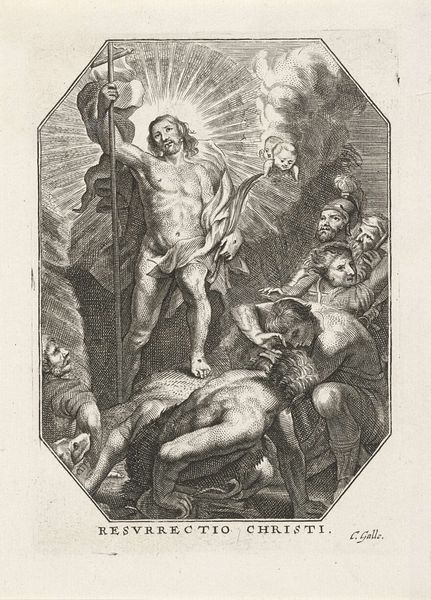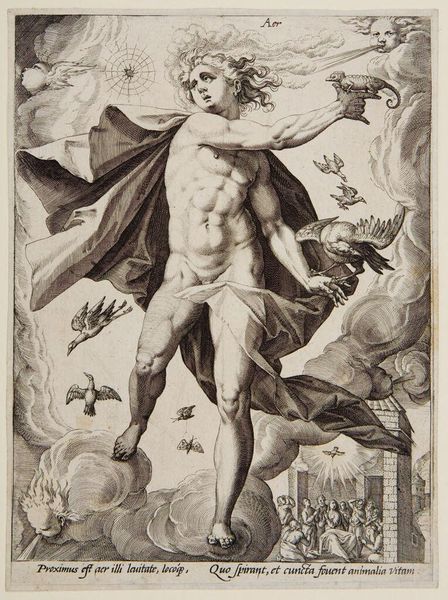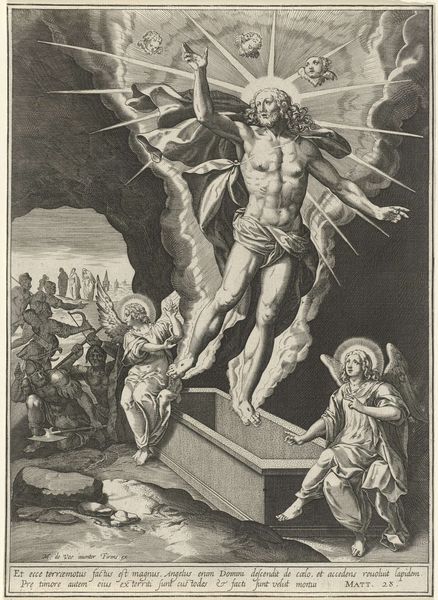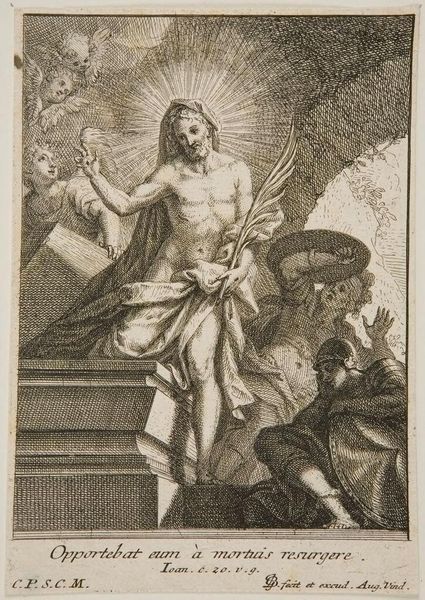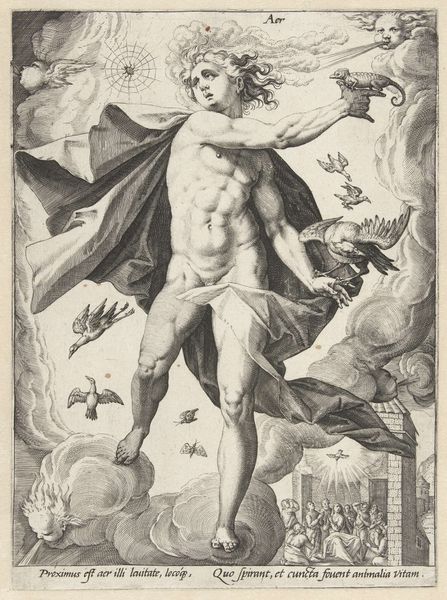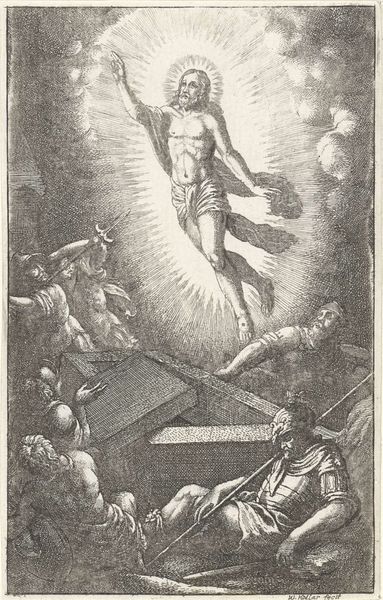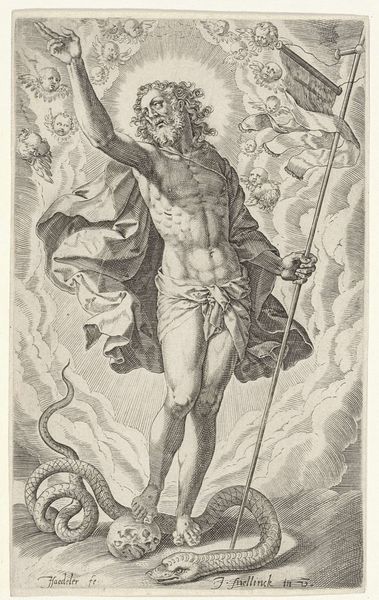
Copyright: CC0 1.0
Curator: This is Johann Sadeler I's "Resurrection," held at the Harvard Art Museums. I'm immediately struck by the almost brutal physicality rendered with such fine lines. Editor: All that divine light, yet the cherubic faces seem almost incidental, like a decorative afterthought to this triumphant return. It feels more about human aspiration than heavenly presence. Curator: It's fascinating to consider how the engraving process itself—the labor of creating those fine lines—contributes to the sense of embodied power. The musculature isn't just drawn, it's built, etched into the material. Editor: The soldiers at the left recoil in terror, underscoring the cultural weight of the resurrection image. And I note the haloed angels flanking Christ, guiding the eye upward from turmoil towards divinity. Curator: And don't forget the cultural exchanges in play here: Sadeler, a Flemish artist, interpreting an Italianate style. It reveals how artistic labor circulated within a specific economic and social context. Editor: True, but it also speaks to the enduring need across cultures to visually represent this potent symbol of hope, of overcoming mortality. Curator: Absolutely, and the act of repeatedly printing and distributing such images only further solidified their cultural and religious significance. Editor: Considering Sadeler's technical skill and the symbolic weight, it makes one contemplate the power images hold in shaping belief.
Comments
No comments
Be the first to comment and join the conversation on the ultimate creative platform.
